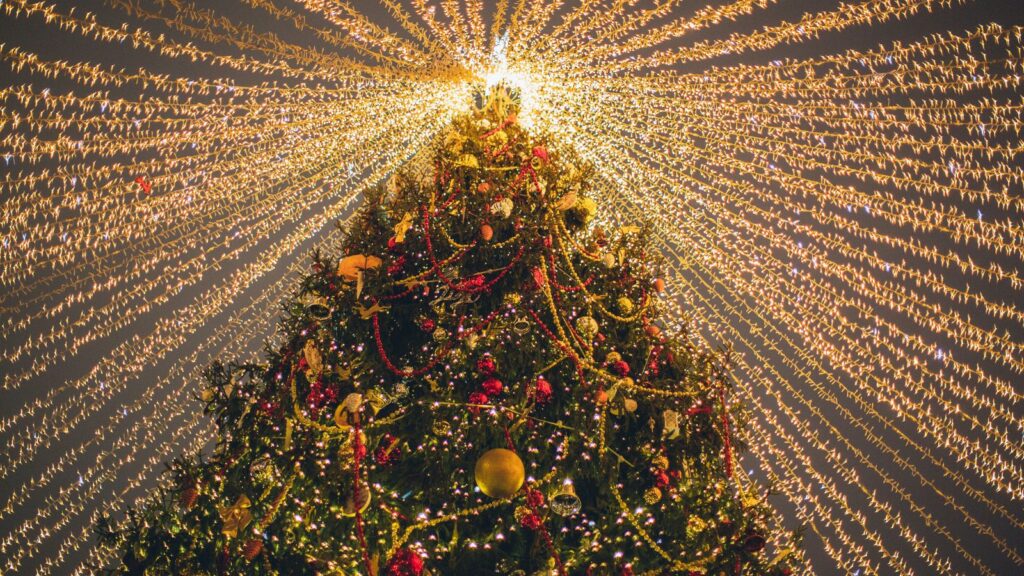Tree:Pvllsf8kvag= Christmas
 The Christmas tree’s history spans centuries, reflecting cultural traditions and symbolism. Its evolution portrays a journey from ancient customs to contemporary holiday practices. Both the Christmas tree and online betting illustrate how traditions and practices adapt to changing times, embracing new technologies while retaining cultural significance or engagement.
The Christmas tree’s history spans centuries, reflecting cultural traditions and symbolism. Its evolution portrays a journey from ancient customs to contemporary holiday practices. Both the Christmas tree and online betting illustrate how traditions and practices adapt to changing times, embracing new technologies while retaining cultural significance or engagement.
The Christmas tree’s roots trace back to ancient winter solstice celebrations. Pagans revered evergreen trees as symbols of eternal life. During the Middle Ages, Christians in Germany began using decorated trees as a tribute to Adam and Eve on December 24. By the 16th century, these trees evolved into a Christmas tradition, with Martin Luther reportedly adding candles to mimic starlit skies. The 19th century saw the custom spread across Europe and eventually to America, where it became a cherished holiday emblem.
Different cultures contributed to the Christmas tree’s worldwide popularity. The Scandinavians included trees in their winter festivals to honor deities. Germans emigrating to the United States in the 19th century brought their Christmas tree customs with them. Queen Victoria and Prince Albert popularized the tree in the UK by showcasing their decorated tree at Windsor Castle in 1848, inspiring widespread adoption. Each culture incorporated unique elements, making the Christmas tree a universal symbol of celebration and unity.
Choosing The Perfect Christmas Tree
Selecting the right Christmas tree involves several important factors. Consideration of size, shape, and environmental impact ensures a tree that complements the space while aligning with eco-friendly values.
 Tree dimensions significantly affect suitability for different living areas. For rooms with high ceilings, taller trees create an impressive look, while smaller trees fit perfectly in apartments or cozy spaces. Consider the tree’s width to ensure it doesn’t overwhelm the room or obstruct passageways. Perfectly symmetrical trees offer a classic, traditional look, whereas those with natural, slightly uneven branches provide a rustic charm.
Tree dimensions significantly affect suitability for different living areas. For rooms with high ceilings, taller trees create an impressive look, while smaller trees fit perfectly in apartments or cozy spaces. Consider the tree’s width to ensure it doesn’t overwhelm the room or obstruct passageways. Perfectly symmetrical trees offer a classic, traditional look, whereas those with natural, slightly uneven branches provide a rustic charm.
Modern consumers prioritize ecological responsibility when choosing trees. Opting for real trees often supports local farmers and provides a habitat for wildlife during growth. Many argue that real trees decompose naturally, reducing landfill waste. Conversely, artificial trees may last several years, reducing annual cuttings, yet their production involves non-renewable materials. Sourcing a local tree recycling program or repurposing ensures a sustainable afterlife choice.
Maintenance And Care Tips
Christmas trees, whether real or artificial, require proper maintenance to ensure they remain beautiful throughout the holiday season. Detailed care strategies differ for each type of tree.
 Real trees, like spruce and fir, need sufficient hydration to maintain their freshness. Cutting a half-inch slice from the base before placing it in a stand maximizes water absorption. They should absorb one quart of water per inch of trunk diameter daily. Keeping water levels consistent reduces needle dropout, extending the tree’s vibrant life. Positioning the tree away from heat sources, such as radiators and fireplaces, prevents drying. Humidity in the room helps maintain needle flexibility and shine.
Real trees, like spruce and fir, need sufficient hydration to maintain their freshness. Cutting a half-inch slice from the base before placing it in a stand maximizes water absorption. They should absorb one quart of water per inch of trunk diameter daily. Keeping water levels consistent reduces needle dropout, extending the tree’s vibrant life. Positioning the tree away from heat sources, such as radiators and fireplaces, prevents drying. Humidity in the room helps maintain needle flexibility and shine.
Artificial trees require careful packing to maintain their shape for future use. Remove decorations and lights before disassembly. Tree sections should be carefully compressed, starting from the bottom to the top, to preserve branch fluff. Storing in original boxes, or durable tree storage bags, minimizes dust and wear. Cool, dry storage rooms prevent discoloration and ensure the tree stays in optimal condition for the next holiday season. Labeling parts enhances reassembly efficiency and maintains the tree’s structural integrity.
Celebrating Joy
The Christmas tree remains a timeless emblem of holiday joy and unity, deeply rooted in cultural traditions and evolving with modern sensibilities. Its enduring appeal lies in its ability to adapt to contemporary trends while preserving its historical significance. Whether adorned with classic ornaments or innovative designs, the tree continues to be a cherished part of holiday celebrations. As families gather around it, the Christmas tree stands as a testament to the spirit of togetherness and the joy of the season.
